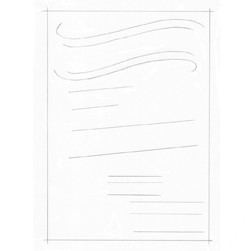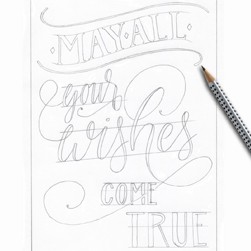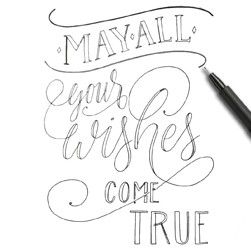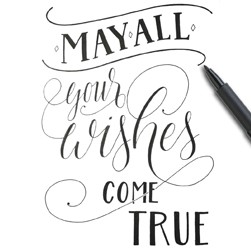
Once you have developed an idea of how the words should be arranged, you can start with the preliminary work.
First sketch the border for the banner in the top section with a pencil. In the banner, draw a line for the first two words.
Now draw the lines for the other words with a ruler. For cursive script, the base line and x-height are sufficient, for block letters, you also need the auxiliary line for the ascenders. (Note: In the attached image, the lines are drawn in thicker than necessary for clarity!).

Now draw a detailed preliminary sketch of the writing. It's best to also sketch the thick/thin style for the cursive writing to help avoid mistakes later. Anywhere where you draw a downward stroke while writing - i.e. draw a line from top to bottom - the line gets thicker.

Now start tracing the contours of the writing on your sheet of paper from top to bottom. I have used the Pitt Artist Pen in the thicknesses XS and S for this. Take your time and concentrate so that you draw the lines deliberately.

Now you can colour in the letters. Here, I have used the Pitt Artist Pen in the thicknesses S and 1.5.
Once the ink is dry, you can carefully erase the auxiliary lines. Finished.